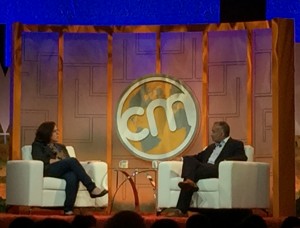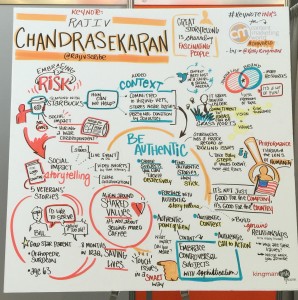Starbucks is a company that has amply demonstrated that it’s about far more than pouring a cup of coffee. Their famous CEO Howard Schultz has boldly led the company to take on social impact initiatives that give their customers the opportunity to participate in those initiatives. Not all of the initiatives have been universally embraced, and others have had big positive impacts.

One initiative that has rippled far and wide was one driven by content, and it’s the collaboration between Mr. Schultz and an accomplished journalist, Rajiv Chandrasekaran that began with the book, For Love of Country: What Our Veterans Can Teach Us About Citizenship, Heroism, and Sacrifice
The book tells stories of the courage, dedication, and sacrifice of American veterans on the battlefield and their equally valuable contributions on the home front. The project resulted in the story retold in videos and other media and was promoted through the Starbucks brand and its vast network of over 7,000 locations.
Good lessons about how to create content emerge from the story of For Love of Country - and not necessarily content related just to social impact. Rajiv shared these insights with the sensibilities of a journalist and the story highlights how important authenticity is to any content, along with context. This is important because the media landscape today is changing, and now almost anyone can be a content creator. And forward-leaning brands are becoming both content creators and curators.
Authenticity is also important because our society is changing, particularly millennials – social causes and finding meaningful engagement beyond the transaction is increasingly important. And talent is not always driven by money, often it’s about shared values and the opportunity to do something creative and/or meaningful. So what are some ways you can have authentic content? Rajiv offered six:
- Choose authentic subjects: This is particularly important if you choose to do social impact. Choose ones that you can tackle subjectively in the eyes of your audience. And it it’s not related to social impact, then focus on areas where your brand has authority or can develop the authority as a logical extension where it’s currently positioned.
- Find authentic stories: People can sniff out inauthenticity, and it’s particularly true of millennials. The other reason is that authentic stories have more staying power with people and therefore they are more compelling.
- Partner with authentic storytellers. Whether it is in-house or folks outside your organization, doing this will give your content more impact. Content usually doesn’t have the same impact when it’s done with a ghostwriter.
- Take an authentic point of view. This is related to Ann Handley’s point about bolder marketing as a component to great content marketing. To do this, avoid the least common denominator and don’t be afraid to tackle controversial subjects, just try to do it with sophistication.
- Create an authentic context for your stories. What Starbucks did with Rajiv in writing that book fit within a broader context for Starbucks and its embrace of social causes that enabled it to make sense.
- Have an authentic call to action. Make sure it gives the audience a meaningful way to participate in your cause.

So not every company has the market presence of Starbucks (or the uniquity!), not every CEO has the star-power of Howard Schultz and not everyone can partner with an award-winning journalist to write a book. But that doesn't mean we should not strive with authenticity.
And it's not simply about pleasing millennials, as important as that is. The reality is that authenticity has always mattered, and what's changed is that our always-on multimedia social media world has made it easy to spot and "out" inauthenticity. So why risk it?
It's equally important that your content have context - an appropriate context. It should be meaningful to your company's values, mission or value proposition, otherwise you'll just leave your audiences wondering why you bothered creating the content.
.
Of course, your content should be something that informs, entertains or somehow makes things easier/better for your audience, but it should also be meaningful for you - or why bother?
That's the bottom line. As always - thank you for following!
Rajiv Chandrasekaran was a keynote speaker at the Content Marketing World conference in Cleveland, Ohio.
